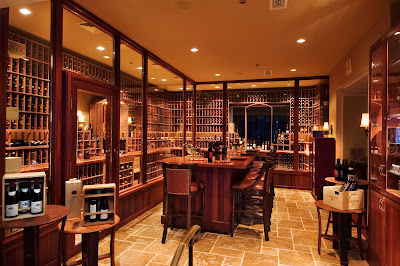For someone who is by no stretch of the imagination a wine connoisseur, interviewing a sommelier was a daunting task. And indeed, the answers given by Ian Cauble, the award-winning young Lead Sommelier at The Ritz-Carlton, Half Moon Bay, were peppered with a litany of terms that left us scrambling for an atlas and a dictionary.
But even for an amateur, this is jargon that anyone can appreciate: it evokes cool dark cellars and sun-drenched vineyards; the rolling hills of wine country and summer patio dinners with friends.
It was a college semester in Chile that sparked Ian’s passion for wine. Now the Lead Sommelier at The Ritz-Carlton, Half Moon Bay, Ian works closely with the Chef de Cuisine of Navio, the hotel’s signature restaurant, to expertly pair wines with a menu that changes seasonally in keeping with locally-sourced California ingredients.
He offers two tips that guide the process of choosing which wine to match to which dish. First, know your sauce: “One major rule of thumb is that the dish’s sauce can never be sweeter than the wine,” Ian says, “or the wine will taste acidic and tart.” Or, fall back on the classic rule of thumb that “what grows together goes together” to match a regional dish with a wine that comes from the same region. Ian exercises these techniques for a weekly “Taste of Navio” dinner held at the restaurant, which overlooks the seaside cliffs of Half Moon Bay. It’s a six-course dinner that not only celebrates the diversity of the region’s produce, but also introduces diners to an array of new wines.
And if he wasn’t a sommelier? Ian says that he wouldn’t stray too far from the domain he knows so well. “I could handle being a winemaker.”
FROSCH Insider: What’s the biggest misconception about wine, or what do you wish people knew that would make them appreciate it more?
Ian Cauble: The biggest misconception about wine is that the winemaker is the most important part of quality. In fact, it’s the vineyard. Without quality grapes, even the best and most famous winemakers on the planet could not make great wine. Just like great chefs can’t make great food without quality ingredients, neither can winemakers. The quality of the grapes is determined by the types of clones used, rootstock types, the viticulture techniques, soil, climate, yield per vine and other factors. Winemakers’ choices are very important, but not nearly as crucial as the terroir of the vineyard that creates the grapes.
FI: What’s your favorite wine region? Are there any up-and-coming regions that have caught your eye recently?
IC: My favorite region is Burgundy. The best Pinot Noir and Chardonnay in the World come from Burgundy, an area between Lyon and Dijon in Southeastern France. For millennia they have been figuring out that there are thousands of different vineyards that each taste unique based on the qualities of the soil and climate. Burgundy is an endless learning experience, and an expensive hobby!
On the other side of the world, the Santa Rita Hills region of Santa Barbara has been coming up in the last few years. This was the area seen in the movie Sideways. There are some great Pinot Noirs coming from this region and it is still largely unknown by the majority of the world’s wine lovers. Producers like Brewer Clifton, Tyler, Dragonette, Clos Pepe and Samsara are leading the way. A producer located in Lompoc within Santa Rita called Palmina focuses on Italian varietals that express true varietal character and offer amazing quality for the price of the wines.
 |
| Eno Wine Room at The Ritz-Carlton, Half Moon Bay. |
FI: What sort of trends have you noticed recently with regard to guests’ choice in wines? Do you have a favorite wine that you feel is underappreciated?
IC: I have noticed that sweet buttery California Chardonnays are falling out of favor for most guests. I find the trend leaning toward more balanced styles that show true varietal character of fresh pear, apple, white floral and citrus with lighter oak influence. These styles tend to be more food-friendly, lower in alcohol and much more refreshing to drink. Hanzell is one of my favorite Chardonnays made in this style. Sandhi, Evening Lands, Tyler, Peay, Hirsch, Au bon Climat and Calera are also producers of a more balanced and refreshing style.
One grape varietal that I feel is underappreciated is Syrah. There is some unbelievably good Syrahs out there in the market, especially for the price. They are some of the best values and can be incredible with food. Syrah in its best form should show ripe black fruits, violets, black pepper with a light meaty note. This is a grape that is classically grown in the Northern Rhone Valley in France and is showing top quality from California, Oregon and Washington. Look for producers like Qupe, Gramercy, Arnold Roberts, Peay, Wind Gap, Pellerin and Copain. These are some of the top producers.
Ian, thanks for sharing your expertise!
